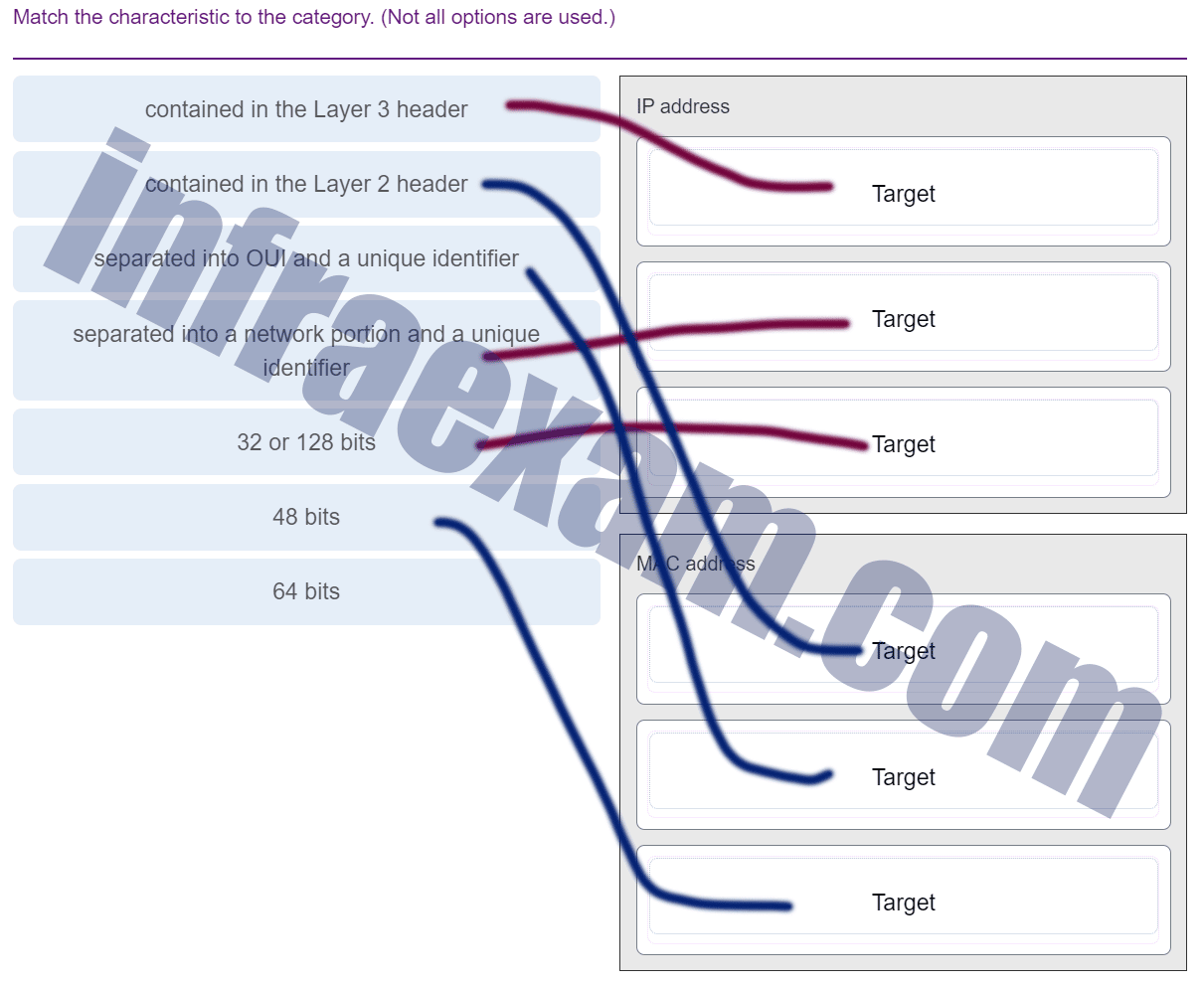| Explanation & Hint:
The characteristics given in the image seem to describe the differences between IP addresses and MAC addresses. While I can’t see the full details, I can provide information based on standard networking knowledge:
- Contained in the Layer 3 header: This characteristic is related to the IP address.
- Contained in the Layer 2 header: This characteristic is related to the MAC address.
- Separated into OUI and a unique identifier: This characteristic is related to the MAC address. The Organizationally Unique Identifier (OUI) is part of a MAC address that uniquely identifies the manufacturer or vendor of the network interface card.
- Separated into a network portion and a unique identifier: This characteristic is related to the IP address. An IP address is divided into a network and a host portion, which identifies a specific network and a specific device on that network.
- 32 or 128 bits: This characteristic relates to the length of IP addresses. IPv4 addresses are 32 bits in length, and IPv6 addresses are 128 bits in length.
- 48 bits: This is the length of a MAC address, which is always 48 bits in length.
- 64 bits: This could potentially refer to several things in networking, but it often refers to the length of the interface identifier in an IPv6 address when using the EUI-64 format, or it might refer to a subnet size in IPv6 addressing, neither of which are specific to MAC addresses.
|
